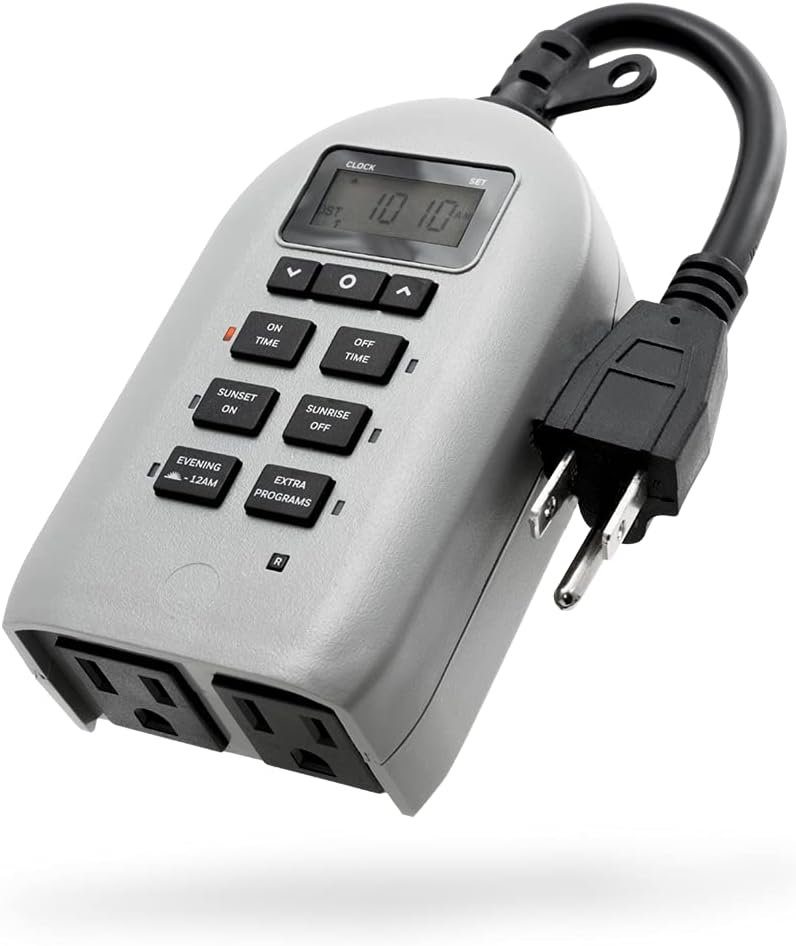Light for Carnivorous Plants
Lighting is one of the most important aspects of growing carnivorous plants. Many species grow best or even require bright sunlight or strong LED growlights. High light species include flytraps, Sarracenia, most sundews, Heliamphora, and Aldrovanda. Species like Pinguicula, Utricularia, and Genlisea can grow well in moderate to high light levels. Nepenthes pitcher plants usually do best in moderate light levels.
When assessing light, there are 3 factors: Spectrum, Intensity, and Duration.
Spectrum: Sunlight has a broad spectrum and LED grow lights target specific wavelengths of light that are designed for plants. Not all plants prefer the exact same spectrum, but most plants will grow well under high quality grow lights. Lights that have more red wavelengths or are a lower color temperature (~3000K) will induce denser, more colorful growth in plants. Lights that are bluer will cause plants to be greener. Again, plants respond differently to different spectra, but general growlights will be perfectly fine for all but the most obsessed growers.
Intensity: Light intensity is measured a few different ways. Simple light meters will measure in Lux which is one lumen per square meter. Without getting too technical, this is measuring the brightness as perceived by the human eye (which is different to how plants receive light). Sunlight can be around 120,000 lux, and older T5 fluorscent bulbs that I used to use in a 4 x 54W fixture would put out around 20,000 lux at maybe 1 foot below. Now that LEDs are the choice of growlight, the measurement is in PPFD (Photosynthetic Photon Flux Density) measured in µmol/m2/s. Again, in simple terms, just look at the PPFD at different distances from the light which are usually given by the LED manufacturer.
Duration: When growing under LEDs, set the duration to be appropriate for the time of year and natural photoperiod.
(Check my shop for the recommendations and more details on the lights)
Timers
I use special timers for my plant lights that simulate seasonal changes in daylight hours. For many species like flytraps, pygmy sundews, tuberous sundews, Sarracenia, or pretty much anything that isn’t from the equator, changing light hours will induce the proper seasonal cues for these plants. For example, flytraps will go dormant in winter when the photoperiod (hours of light per day) decreases, then flower in spring with lower traps, then send up vertical traps in summer. Pygmy sundews produce gemmae in the fall/winter which is triggered by the photoperiod. Tropical plants like Nepenthes or Heliamphora do not need seasonal changes in light since they come from the tropics.
Kasa Smart Plug - Automatic Seasonal Photoperiod
These plugs are now the easiest smart plugs that have a sunrise/sunset function. They are low cost and easy to use through the associated app. I use these not only for lights, but for my watering/drainage systems as well. They can be programmed to turn on for set durations, or on/off at certain times of the day. Most importantly for lighting, it has a sunrise/sunset function that can match the natural photoperiod throughout the year.
It uses your location to determine sunrise and sunset times. If you live at the approximate latitude of the native location of your plants, it is fine to set it to your actual location. If your latitude varies significantly, you can manually set your latitude in the app which should change the sunrise/sunset times to be ideal for the plants. Coincidentally, around 34° latitude is the natural latitude for Flytraps, Tuberous/Pygmy Sundews, Cephalotus, South African Sundews, Sarracenia, Warm Temperate Pinguicula.
UltraPro Daysmart Timer - Automatic Seasonal Photoperiod
This timer can automatically adjust the photoperiod based on the calendar to easily induce the proper seasons for your carnivorous plants. It is essential for most plants to get the proper seasonal cues for long term health and vigor. I set this timer to turn on automatically during the day and it will automatically adjust the “on” duration to match the amount of sunlight per day for that time of the year.
NOTE: I have started using the Kasa timers in place of these due to ease of use.
The only problem is that it is designed to turn on at night and turn off during day. But there is a simple way to fix this, we just have to trick the timer into thinking it’s nighttime when it is daytime. To do this, you must do two things: offset the clock timer by 12 hours, then offset the calendar date by 6 months. The 12 hour shift changes the “on” time from night to day, but remember that in summer the days are long and the nights are short. So even if we force the timer to turn on during the day, it is basing the duration on the expected night duration. To flip the day/night durations to match the current daylight hours, we offset the calendar by 6 months. Once you have offset the date and time, press the buttons “SUNSET ON” and “SUNRISE OFF” so they are the only lights illuminated. It will turn on automatically during the next “on” time which could be the following day. These work great and I use them for all of my non-equatorial plants. You can select a latitude for the photoperiod as well which is helpful. I typically use the “South” (USA) photoperiod which is sufficient to induce proper seasonal cues in my plants.
Sunlight
Sunlight is a great form of light and many plants love the full spectrum of natural sun. High light plants are easy to grow outdoors in natural sun, and the benefit is that the photoperiod (duration of light per day) will adjust naturally to induce seasons for non-tropical plants. Just keep in mind that sunlight will warm the plants much more and contains UV. If moving plants from indoors to outdoors or recently after shipping, try to ease them into the brighter light to avoid sunburn.

